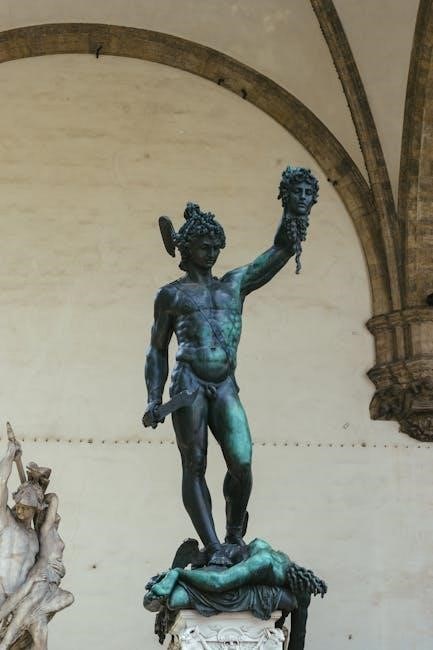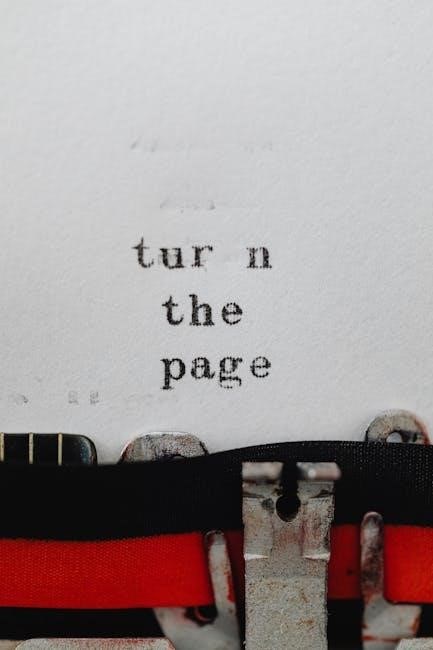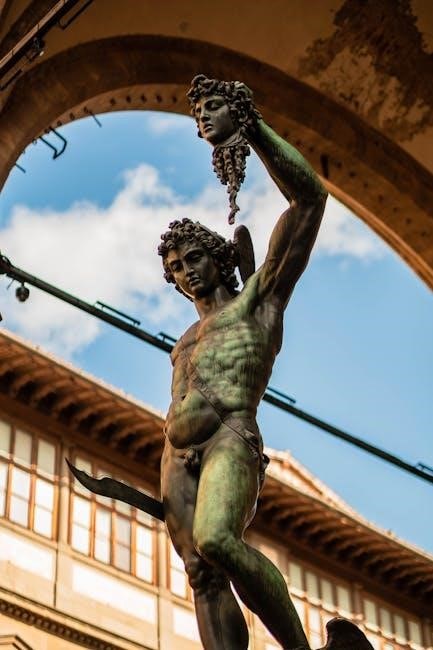Perseus and Medusa: A Story of Heroism and Tragedy
The myth of Perseus and Medusa stands as one of the most celebrated tales in Greek mythology. It perfectly encapsulates themes of heroism, fate, and the transformative journey of its characters. The story serves as a profound narrative reflecting the complexities of heroism.
The Birth and Early Life of Perseus

Perseus, a prominent figure in Greek mythology, was born under extraordinary circumstances, marking him from the start as a hero of destiny. He was the son of Zeus, the king of the gods, and Danaë, a mortal woman. His birth was far from ordinary, Danaë’s father, King Acrisius, had been warned by an oracle that his own grandson would kill him one day, causing much grief.
To avoid this fate, Acrisius imprisoned Danaë in a bronze tower, cutting her off from the world and any potential suitors. However, Zeus, in the form of golden rain, visited Danaë in her confinement, impregnating her with Perseus. The myth goes on to say that Danaë gave birth to him while still imprisoned by her father, King Acrisius.
The birth of Perseus, despite Acrisius’s efforts, fulfilled a part of the prophecy. Fearful of directly killing his daughter and grandson, Acrisius instead cast them out to sea in a wooden chest, hoping they would perish. The chest eventually washed ashore on the island of Seriphos, where Danaë and Perseus were rescued by Dictys, a kind fisherman and brother of King Polydectes. Dictys offered them shelter and protection, and Perseus grew up under his care, unaware of his divine parentage and the destiny that awaited him.

The Quest for Medusa’s Head: Polydectes’ Deceit
Perseus’s quest to retrieve the head of Medusa was not born out of heroism, but out of the deceitful machinations of King Polydectes. Polydectes had grown fond of Danaë and desired her for himself, but Perseus stood as an obstacle to his desires. Determined to remove him from the picture, Polydectes devised a cunning plan.
Under the guise of organizing a wedding feast for himself, Polydectes asked each of his guests to provide him with horses as gifts. Perseus, however, possessed no horses to offer. In a moment of youthful recklessness and eagerness to prove himself, Perseus boasted that he could bring Polydectes any gift he desired, even the head of the Gorgon Medusa.
Polydectes seized upon this rash promise, fully expecting Perseus to fail and meet his demise at the hands of Medusa. He held Perseus to his reckless promise and demanded the head of the only mortal Gorgon, Medusa, whose gaze turned people to stone. Polydectes believed this task to be impossible, since the Oracle had also prophesied that Medusa could never be defeated. Thus, Perseus, driven by his word and manipulated by Polydectes’s hidden agenda, embarked on what seemed like a suicide mission, unaware of the divine assistance that would guide him.
Divine Aid: Athena’s Guidance and Gifts
Recognizing the perilous nature of Perseus’s quest and the deceit behind it, the gods intervened to aid the young hero. Athena, in particular, played a crucial role in guiding and equipping Perseus for his daunting task. Athena, the patron of heroes, advised him to find the Hesperide Nymphs, whom only the Grææ knew where they lived.
Athena, who particularly despised the Gorgon, lent him her wisdom and strategic insight, understanding that brute force alone would not suffice against Medusa. She provided him with essential tools and knowledge. Athena lent Perseus her polished shield for him to view Medusa’s reflection without becoming petrified.
Beyond Athena’s direct assistance, Perseus received aid from other divine sources. He was given a kibisis, a knapsack to safely contain the Gorgon’s head which the goddess warned could still petrify even in death. He was also gifted a magic helmet of invisibility from Hades, allowing him to approach Medusa undetected. Hermes, the swift-footed messenger god, provided winged sandals, granting Perseus the ability to fly. Armed with these divine gifts and guided by Athena’s wisdom, Perseus stood a chance against the monstrous Medusa.

Medusa’s Transformation: From Beauty to Monster
Medusa’s story is one of tragic transformation, from a beautiful maiden to a monstrous Gorgon. Once, she was a beautiful young woman. Hesiod’s Theogony is the earliest written source for the Medusa myth. In that story, she was a monster (a Gorgon) who was seduced by Poseidon and willingly had relations with him.
Ovid is the most well known as his is the most complete telling, but it’s key to note that Ovid never explicitly states that Neptune (Poseidon) forced himself onto Medusa. It’s also implied that she was still a Gorgon in the myth (or at least it’s never implied that she’s human). Explore the tragic tale of Medusa, once a beautiful priestess of Athena turned monstrous after a betrayal in the sacred temple.
According to some accounts, Medusa was a priestess in Athena’s temple who was cursed by the goddess after being violated by Poseidon within its sacred walls. Athena, enraged by the desecration of her temple, transformed Medusa into a hideous creature with snakes for hair, and a gaze that could turn men to stone. This transformation served as both a punishment and a means of protection.

Perseus’ Strategy: The Mirrored Shield
To confront Medusa, Perseus knew he needed a strategy to avoid her deadly gaze. Athena, the goddess of wisdom and warfare, provided him with a crucial tool: a highly polished, mirrored shield.
Perseus attacked Medusa while wearing the magic helmet. He also was careful not to look right at her. Instead, he looked only at her reflection in the polished shield. Athena lent Perseus her polished shield for him to view Medusa’s reflection without becoming petrified, and gave him a kibisis, a knapsack to safely contain the Gorgon’s head which the goddess warned could still petrify even in death.
The mirrored shield allowed Perseus to approach Medusa safely, using the reflection to guide his movements and actions. By looking at Medusa’s reflection, Perseus was able to avoid direct eye contact, thus preventing himself from turning to stone. The shield became his window, a means of engaging with Medusa without succumbing to her petrifying power. This clever tactic highlights Perseus’ intelligence and resourcefulness.
The Slaying of Medusa
Guided by the reflection in his shield, Perseus approached Medusa as she slept, her serpentine hair writhing around her. With Athena guiding his hand, Perseus raised his sword, a weapon granted to him by the gods, and with a swift and decisive strike, he severed Medusa’s head from her body.
From Medusa’s severed neck sprang Pegasus, the winged horse, and the giant Chrysaor, both offspring of Poseidon. Perseus quickly seized the head, carefully placing it in the kibisis, the magical bag given to him by the Hesperides, to contain its power. With one stroke of his sword he cut off Medusa’s head. He then put the head in a bag.
The other Gorgons, Medusa’s sisters, awoke and gave chase, seeking to avenge their sister’s death. However, Perseus, aided by Hades’ helm of invisibility, escaped their wrath, disappearing into the sky. With Medusa’s head secured, Perseus began his journey home, ready to face whatever challenges lay ahead, armed with a weapon of unimaginable power.
Perseus and Andromeda: Rescue from Cetus
During his journey back to Seriphos, Perseus flew over the kingdom of Aethiopia. There, he beheld a beautiful maiden, Andromeda, chained to a rock by the sea. Queen Cassiopeia boasted that she was more beautiful than the Nereids, so Poseidon sent the sea monster Cetus to ravage Aethiopia. An oracle told the King and Queen that they had to sacrifice their daughter, Andromeda to the monster in order to appease Poseidon.
Andromeda was the daughter of King Cepheus and Queen Cassiopeia, who had angered Poseidon. As punishment, Poseidon sent a sea monster, Cetus, to ravage their kingdom. To appease the god, Andromeda was offered as a sacrifice to the beast.
Moved by her plight, Perseus approached Andromeda and learned of her predicament. He offered to slay Cetus in exchange for her hand in marriage. Cepheus and Cassiopeia readily agreed. Perseus then confronted Cetus, slaying the beast and freeing Andromeda from her chains.
Using Medusa’s Head as a Weapon
After slaying Medusa, Perseus discovered that her severed head retained its petrifying powers. He carefully placed it in a magical kibisis. During his journey, he used the head to defend himself and others from various threats.
One notable instance occurred when Perseus returned to Seriphos. He discovered that his mother, Danaë, was being harassed by King Polydectes. Polydectes still doubted that Perseus had slain Medusa. So he demanded proof. Perseus revealed Medusa’s head, instantly turning Polydectes and his court into stone. Thus, he freed his mother from the king’s unwelcome advances.
Another instance involved Phineus. Phineus was betrothed to Andromeda but tried to interfere with her marriage to Perseus. During the wedding feast, a quarrel erupted, and Perseus used Medusa’s head to turn Phineus and his conspirators into stone, ensuring his safety and that of his bride.
The Enduring Legacy and Interpretations of the Myth
The myth of Perseus and Medusa has resonated through centuries, inspiring countless works of art, literature, and popular culture. Perseus embodies the archetypal hero, demonstrating courage, cunning, and the triumph over seemingly insurmountable obstacles. His story is a testament to human potential.
Medusa’s tale, on the other hand, has been reinterpreted in various ways. In some interpretations, she is seen as a victim of divine injustice, transformed into a monster as punishment for Poseidon’s actions in Athena’s temple. This perspective highlights themes of betrayal, abuse, and the tragic consequences of power imbalances.
The image of Medusa’s head, the Gorgoneion, served as a protective amulet in ancient times. It adorned shields and buildings, warding off evil. Modern artists have embraced Medusa as an emblem of female power, reclaiming her narrative. The myth continues to evolve, reflecting contemporary social movements.
